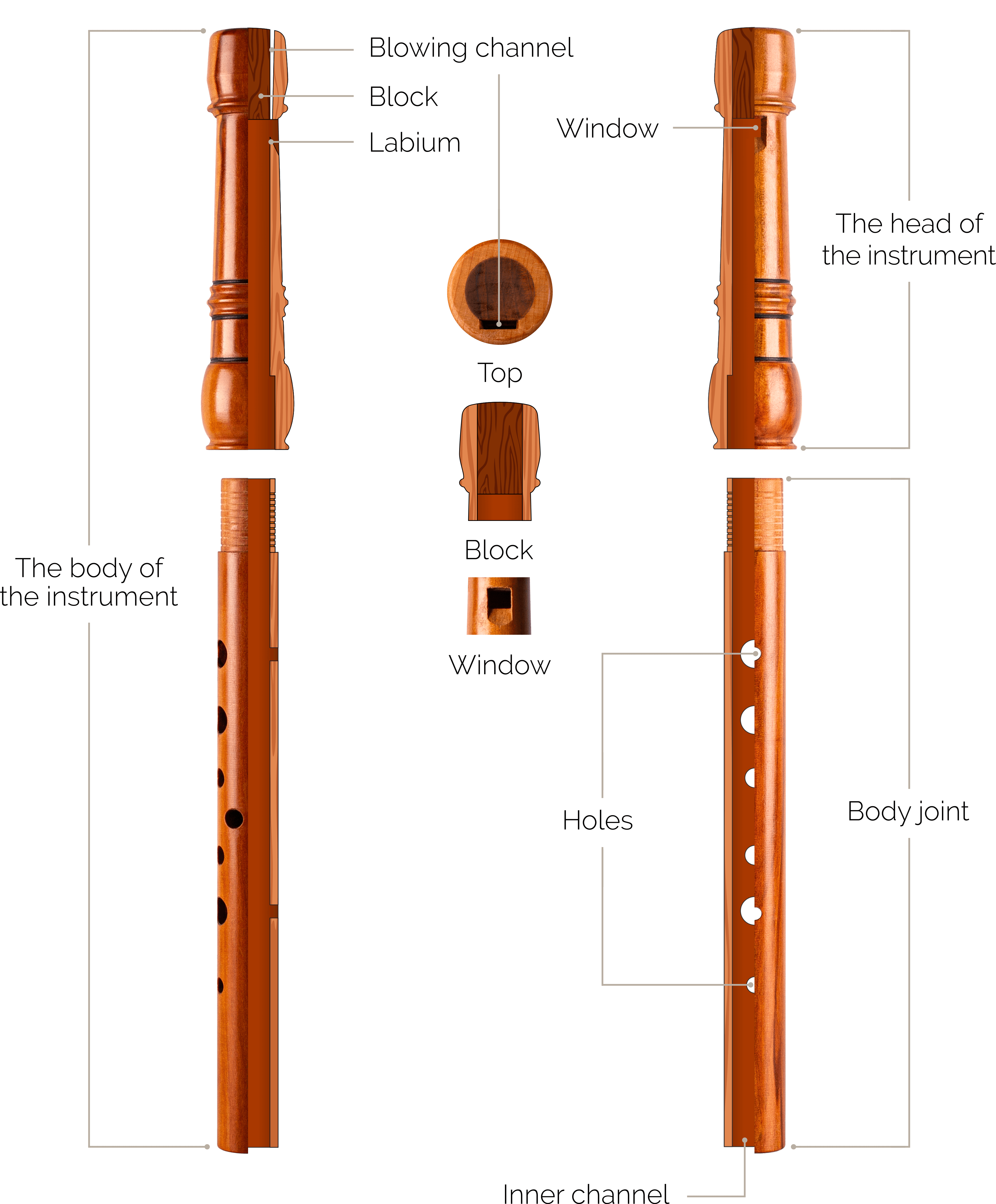
The body of the instrument
The body of the flute most often consists of two parts – the head and the lower knee, or it is one-piece. It is interesting that the first samples of the chromatic longitudinal soprano flute were exactly one-piece. The same instruments are manufactured by us today – they are presented in a single form only in the Historical-80 series in compliance with the norms and standards used by the craftsmen of the Melnytze-Podilskyi production workshops.
The head of the instrument
It is the main part of the flute, in which all its most important components are located, namely: the blowing channel, the mouthpiece, the block, the window and the labium. This is where the performer blows air and this is where the sound is formed. One error in working with these elements by one tenth of a millimeter can affect the quality of the sound, its main characteristics and the tuning of the instrument as a whole.
Mouthpiece
The upper part of the head of the instrument, which at the same time is the top (or beginning) of the blowing channel, which the performer touches with his lips when playing. It is interesting that earlier the upper part of the mouthpiece of the flutes was flat, instead, the first professional sample of Korchynska-Illarionov’s alto flute in 2003 had a slight bevel, which made playing the instrument more comfortable, and also enabled a wider use of some professional flute performance techniques. All the instruments of the COLIBRI series have the same feature.
Block
One of the parts of the head of the instrument that affects the sound quality. Blocks for flutes are made of special wood that can withstand moisture and not deform at the same time. It is interesting that in the history of instrument building of Western European block flutes, which, unlike the Ukrainian flutes, are more than one hundred years old, a large amount of literature and practical experiments are devoted to the topic of making the block, its shape, material and features of its components. It is also interesting that many flute craftsmen still glue the block to the walls of the instrument when making flutes, which in turn prevents it from being knocked out if necessary. This will become a kind of guideline when choosing an instrument – in flutes of the professional segment, the block will never be glued!
Blowing channel
A channel formed between the surface of the block and the inner wall of the instrument, which is one of the key parts of the instrument’s construction, responsible for its quality sound characteristics.
Window
A square or rectangular cutout in the instrument head just below the block line.
Labium
A sharp cut of the lower part of the window, which separates the flow of air that has passed through the lowing channel and is responsible for the formation of sound.
Holes
Holes located along the body of the instrument, which are responsible for the pitch of the sound. There are 8 of them on the front of the instrument, 2 on the back. They are located at different distances from each other, which may seem like a mistake – but it is not so at all. It is interesting that the location of the holes and their diameter is one of the most important issues, which was solved empirically by craftsmen designers and D. Deminchuk in particular. And the solution to this very task led to the patenting of the flute – the only chromatic longitudinal flute.
Inner channel
The channel placed inside the tool starts from the line of the block to the end of the tube. In the design of the flute, it is cylindrical. It is interesting that the volume of the flute largely depends on the definition of its diameter, and any deformations in it that occur during long-term use of the instrument affect its response, octave order and sound quality.
Metal coupling or sleeve
A detail of the design of the instrument that fastens its two parts and makes it impossible for the tool to crack in one of its most sensitive parts.



